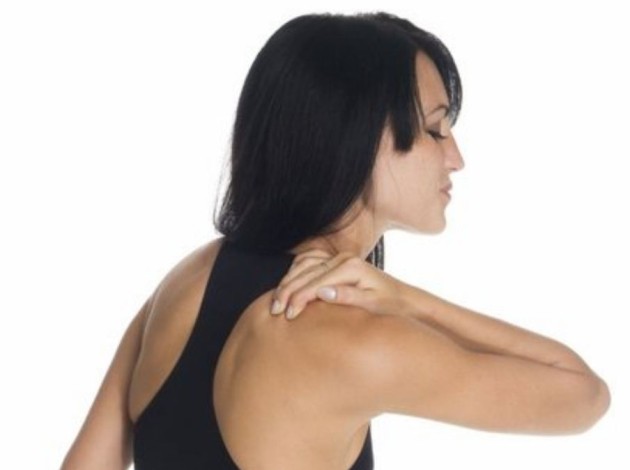
Shoulder pain
How It Happens
Bursitis – Bursa are small sacs of lubricating fluid located at joints throughout the body. Shoulder bursitis can develop as a result of a direct blow, long-term friction in the joint, or infection. In middle-aged and other athletes, it could be caused by calcium deposits that irritate or intrude into the sacs.
Tendinitis – Rotator cuff tendinitis is the mildest form of an overuse injury in the shoulder. Inflammation develops in one or more of the tendons that connect the four rotator cuff muscles to bones. It can happen because of overuse (throwing a baseball, for example), age, injury, or all three.
Impingement Syndrome – This condition occurs when a shoulder muscle, tendon, and bursa sac rub against the shoulder blade. It often develops simultaneously with shoulder tendinitis. In younger athletes this is usually due to an unstable shoulder blade, which is often a result of poor posture.
Bone spur – A bone spur in the shoulder is extra bone tissue that rubs against a tendon, nerve, or other bone. It is possible to have a bone spur for years without symptoms, but when they do appear, you’ll know it because of the pain and limited range of motion in your shoulder.
Partial tear – With friction, overuse, or an injury, the tendon that connects one of the four rotator cuff muscles begins to develop small, micro-tears. With rest and treatment, they heal. Without attention, they can develop into full-thickness tears.
Full-thickness tear – The same things that cause rotator cuff tendinitis—overuse, throwing, reaching, blows and falls—can lead to tears. But the more common cause is a gradual weakening of the tendon from years of use. People over 40 are particularly susceptible. The overuse-plus-age combination is a perfect formula for trouble.
By the Numbers
8-13
Percentage of all sports injuries that involve shoulder pain.
35
Percentage of elite swimmers reporting shoulder pain (swimmer’s shoulder).
52
Percentage of badminton players with past or present shoulder pain.
Who’s At Risk
Baseball players get the most public attention for shoulder pain among athletes, but swimmers, weight lifters (competitive and recreational), rowers, volleyball players, racquet sport athletes, and javelin throwers are all at high risk, as is anyone with poor posture.
Symptoms
Warning signs are similar for all of the conditions that cause shoulder pain, but some differences are noted in the list below.
– Pain, especially in the front of and on top of the shoulder
– Loss of motion (may not occur when tendonitis only is present)
– Increased pain when lifting or reaching above shoulder level (tendonitis)
– Minor clicking sound with overhead motion (tendonitis)
– Gradual onset of symptoms (bursitis)
– Shoulder is more painful when the arm is extended (bursitis)
– Tenderness to touch (bursitis)
Initial Treatment
– Stop or limit the movement that causes the pain.
– Don’t carry heavy bags or other equipment with the affected arm, and don’t use bags with shoulder straps.
– Correct your posture throughout the day – keep your chest up and shoulder blades back and down.
– Apply ice packs for 15-20 minutes, 3-4 times a day.
– Aspirin, ibuprofen, and naproxen may relieve pain and reduce inflammation.
– If the pain persists longer than a week or if you cannot use your arm, get medical help.
How to Avoid Shoulder Pain
– Incorporate Handwalks into your warm-up routine as well as the prehab exercises above.
– Do not increase duration, frequency, or intensity of training more than 10 percent a week.
– Wear warm clothing in cold weather.
– Wear protective equipment around the shoulder to protect against blows.
Read more Physiotherapy articles.